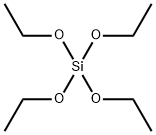Ethyl octanoate , StandardforGC,>99%(GC) , 106-32-1
Synonym(s):
Ethyl caprylate;Ethyl caprylate, Octanoic acid ethyl ester;Ethyl octanoate
CAS NO.:106-32-1
Empirical Formula: C10H20O2
Molecular Weight: 172.26
MDL number: MFCD00009552
EINECS: 203-385-5
| Pack Size | Price | Stock | Quantity |
| 5ML | RMB53.60 | In Stock |
|
| others | Enquire |
PRODUCT Properties
| Melting point: | -48--47 °C (lit.) |
| Boiling point: | 206-208 °C (lit.) |
| Density | 0.867 g/mL at 20 °C (lit.) |
| vapor pressure | 0.02 mm Hg ( 25 °C) |
| refractive index | n |
| FEMA | 2449 | ETHYL OCTANOATE |
| Flash point: | 167 °F |
| storage temp. | Store below +30°C. |
| solubility | ethanol: soluble1ml/4ml, clear, colorless (70% ethanol) |
| form | Liquid |
| color | Clear colorless |
| Odor | at 100.00 %. fruity wine waxy sweet apricot banana brandy pear |
| Odor Type | waxy |
| biological source | synthetic |
| explosive limit | 0.7%(V) |
| Water Solubility | insoluble |
| JECFA Number | 33 |
| Merck | 14,3778 |
| BRN | 1754470 |
| LogP | 4.47 at 22.7℃ |
| CAS DataBase Reference | 106-32-1(CAS DataBase Reference) |
| NIST Chemistry Reference | Octanoic acid, ethyl ester(106-32-1) |
| EPA Substance Registry System | Ethyl octanoate (106-32-1) |
Description and Uses
Ethyl caprylate (ethyl octanoate) is a kind of fatty acid ester formed from caprylic acid and ethanol. It is a kind of natural fruit flavoring agent. It is usually included in the alcohol beverage. Among the main flavoring components of None-flavor liquor, the absolute content of ethyl caprylate is not high but its flavoring contributions is higher than ethyl acetate, ethyl lactate, and ethyl butyrate, only lower than ethyl caproate. Only small amount of ethyl caprylate could produce obvious fruit aroma in Nong-flavor liquor. However, excessive content of ethyl caprylate would inhibit the performance of other flavoring components.
Ethyl caprylate is a flavoring and fragrance agent.
Safety
| Symbol(GHS) |  GHS09 |
| Signal word | Warning |
| Hazard statements | H411 |
| Precautionary statements | P273-P391-P501 |
| Hazard Codes | Xi |
| Risk Statements | 38 |
| Safety Statements | 26-36 |
| WGK Germany | 2 |
| RTECS | RH0680000 |
| Autoignition Temperature | 325 °C |
| TSCA | Yes |
| HS Code | 29159080 |
| Toxicity | LD50 orally in rats: 25,960 mg/kg, P. M. Jenner et al., Food Cosmet. Toxicol. 2, 327 (1964) |



